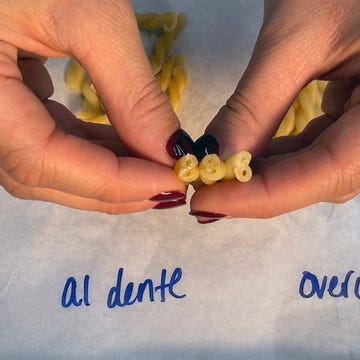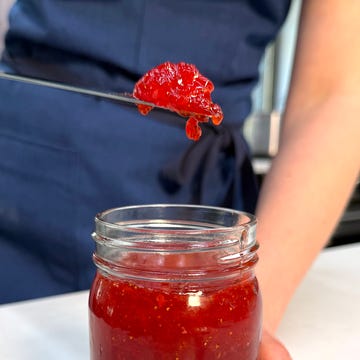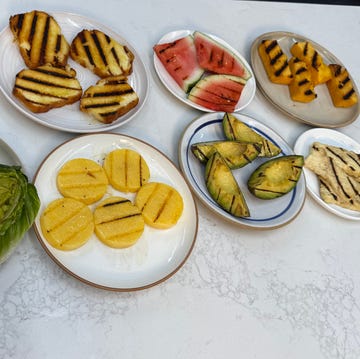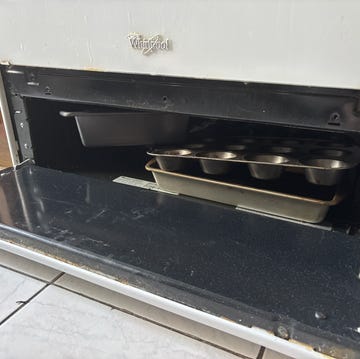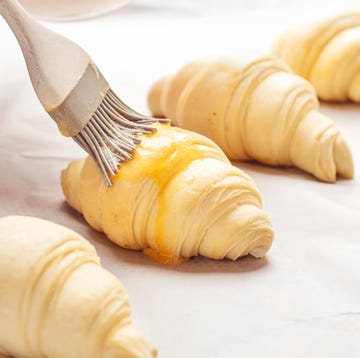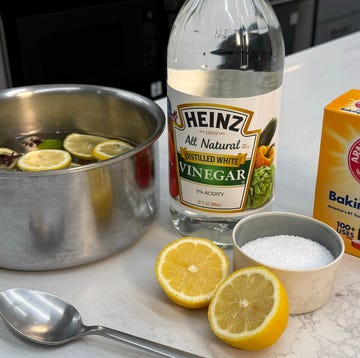Gelatin is associated with jiggling salads and summer party shots, but its potential doesn’t stop there. This magic pantry ingredient can transform your cooking in various ways, from elevating weeknight dinners to turning simple desserts into impressive masterpieces.
Most of us are familiar with colorful boxes of Jell-O mix, and while they contain gelatin, that’s not the product we’re talking about here. Look a little closer on the same shelf, and you’ll find boxes of plain, unflavored gelatin, perfect for both sweet and savory use. Stripped of any artificial colors or flavorings, it’s essentially a form of collagen, a type of protein that naturally exists inside animal bones. It’s most commonly available to home cooks in powdered form, though in some stores (and particularly in Europe), you might find it sold as sheets. This is the gelatin you need to stock in your pantry.
Skeptical? If your only experience with gelatin is making poke cake, it might seem crazy to believe that it has everyday cooking potential. But keep reading: It may be the secret ingredient for excellent homemade marshmallows, chiffon pie, soup dumplings, and more. Here are four ways to use gelatin to level up your cooking game any day of the week.
Gelatin Keeps Meat Juicy
If you’ve ever struggled with dry meatloaf, gelatin is the backup you need to end the fight now. Gelatin has the amazing ability to trap lots of moisture—up to 10 times its own weight!—and hold onto it throughout cooking. Dissolving as little as ½ teaspoon into some liquid and folding that into your ground meat mix can make a huge difference in how tender and juicy that meatloaf comes out. You can also do this with meatballs, with equally great results. Just make sure you’re blooming the gelatin (i.e., sprinkling it over cold liquid and letting it sit there) for five minutes before stirring it into the main mix—and be sure to use unflavored gelatin. We’re not trying to make electric-blue meatloaf here.
It Enhances The Texture Of Stock Or Broth
Dissatisfied with watery boxed stock? Try adding just a teaspoon of unflavored gelatin per quart into the stock to slightly thicken and increase the stock’s overall body. (Make sure to bloom in a little cold liquid before stirring into the bigger pot!)
Gelatin is essentially a form of collagen, a type of protein that’s drawn out of animal bones during periods of long cooking. It appears naturally in your grandma's long-simmered chicken soup, but it’s usually conspicuously missing from most boxed or canned stocks, resulting in a watery, lackluster texture. Adding a little gelatin to the pot adds that textural element back into the stock in a super quick, easy way. Basically, it’s a shortcut.
Improves The Structure Of Desserts
If you’ve made a no-bake cheesecake or a mousse that’s drooped or oozed, consider using gelatin on your next try. Another of its superpowers is its ability to stabilize foams, or trap and hold air molecules in place. This makes it great for any type of light and airy dessert that’s supposed to stay light and airy, like my piña colada mousse or my colleague Franki’s no-bake ricotta cheesecake.
Recipes that call for gelatin typically give specific directions for how much gelatin to use and how to incorporate it, but most call for unflavored gelatin and ask for it to be bloomed in cold liquid and then, once it’s hydrated, dissolved into something warm. Make sure to follow the directions carefully so that gelatin has the best chance to help your dessert stand proud.
Helps Stabilize Whipped Cream
If you’ve ever pre-whipped cream for strawberry shortcakes, put it into the refrigerator for a few hours while you went to pick the berries, and then returned to find it weeping liquid around the edges, gelatin is about to become your best friend. Dissolving just a small amount into a little water and whipping it into the cream ensures your whipped cream will stay light and fluffy for hours. My preferred ratio is one teaspoon unflavored gelatin to 1 ½ cups heavy cream.
The science here is similar to point #3, how it keeps desserts light and airy: The gelatin traps and holds the whipped cream molecules in place, preventing them from deflating. While gelatin-stabilized whipped cream is great for moments when you need to pre-whip your cream, I also love to use it in whipped cream for piping onto cakes or cupcakes- anything where I want the whipped cream to hold its structure for a longer period of time.











